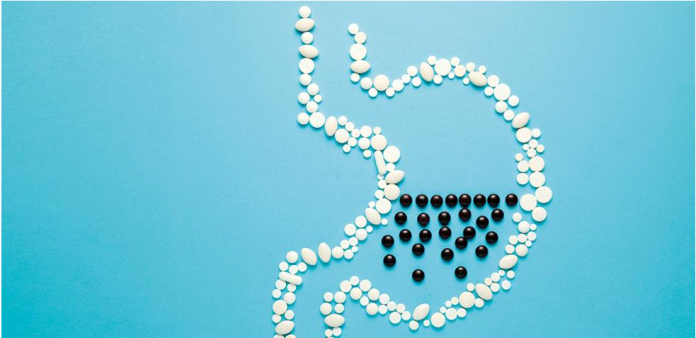Microbiologist Maria Gloria Dominguez-Bello warns of the dangers of an ultra-clean lifestyle in a new documentary
In today’s urban societies, we’ve become very good at keeping things clean and holding any dirt at bay. We use antibacterial sprays in our homes, and too often keep windows and doors firmly closed against whatever might blow in from outside. In New York there are even some apartments where the windows can’t be opened at all. We move from air-conditioned cars to air-conditioned offices, and sanitise our skin with hand gels.
Our built environment is also a highly artificial one. We overuse plastic and other synthetic materials and exclude natural elements from our surroundings.
[Declutter your home like an expert]
But all this cleaning and protection we’ve built up against the natural world doesn’t come without consequence. What we’re doing, without fully understanding the implications, is minimising the variety of natural microbes with which we come into contact.
In my work as a microbiologist at Rutgers University, New Jersey, I’ve observed that the more urbanised the environment we live in becomes, the fewer bacteria from soil and plants we are exposed to. And in the most humanised environments, the only source of microbes ends up being humans themselves, who shed them mostly from their skin and mouths.
What these ultra-clean, indoor modern lifestyles result in, then, is a change in the human microbiome – that is, the genetic material of all the microbes (bacteria, fungi, protozoa and viruses) that live on and inside the human body. Essentially the human microbiome loses diversity as we urbanise. We haven’t proved that urbanisation causes this, but it certainly correlates with it.
In a new documentary for the Smithsonian Channel called Aliens Inside Us, I explore just how big a role microorganisms play in our lives, and how the disappearance of microbes may be responsible for everything from asthma and allergies to diabetes and obesity.
Cleaning is not the only culprit. An article in The Lancet medical journal reported that the number of babies born through caesarean section globally had almost doubled between 2000 and 2015, from 12 per cent to 21 per cent of all births. While in many cases this surgery will be life-saving for women and babies, it might also bring less desirable effects, because a C-section is a birth without microbes.
During a natural birth, microbes colonise the body of the baby just before it is pushed out. This process starts when the mother’s waters break, and as the baby passes through the birth canal, its body is heavily colonised by certain bacteria, which research has suggested may help boost a baby’s response against allergies and asthma. Babies delivered by C-section miss out on exposure to these microbes.
We also overuse antibiotics, which brings collateral damage of its own. The drugs are often prescribed to treat common childhood viruses, despite being ineffective against them. In other cases they can, of course, save lives. But one effect of their widespread overprescription is certain strains of bacteria (which are a type of microbe) change in response to their use, becoming resistant to the drugs. When these bacteria then infect patients, we find they are harder to treat.
Scientists like me are currently trying to understand which of our internal functions are disappearing as a result of the way modern life has changed the variety and nature of microbes to which we are exposed, and those which live on or in us.
What we have learnt so far is extremely concerning, and the problems start right from birth. By performing more C-sections, limiting skin-to-skin contact with the mother at the start of a child’s life, formula feeding instead of breastfeeding and leaving babies to sleep in cots in clean rooms instead of by the side of their mother, we are impairing the transmission of the mother’s bacteria to the baby, which has implications for the baby’s immune system.
The baby then develops within a built environment, composed of artificial materials layered with synthetic paints. We are still learning about the toxins these materials, including plastic, contain. But we do know they often feature compounds that impact our physiology.
Plastics, for instance, contain compounds that interact with the metabolism of steroids, and steroids are the basis of our hormones. We see effects on the endocrine system as a result – a system that plays a key role in whether you develop diabetes, thyroid disease, growth disorders, sexual dysfunction, and many other hormone-related disorders.
We also have evidence that fungal diversity increases as bacteria decrease. What this means is we are trading the infectious diseases that used to kill us for new ones: immune and metabolic diseases such as type 1 diabetes, an auto-immune disease that destroys the pancreas. This used to be rare and its onset was not until patients were in their teens. It’s no longer rare and occurs in children.
Coeliac disease, asthma and obesity may also be on the rise as a result of our more limited microbial exposure. Some people think even Alzheimer’s and autism are related to this. There’s enough evidence to suggest that modern auto-immune diseases have a probable underlying cause related to microbes and the education of the immune system.
In combating, or preventing, some of these ill-effects, scientists like me must establish which microbes children need to develop the healthiest immune systems. We also need to know how we can restore the microbiome after it has been impacted by medicines.
In the meantime, what can we do to alleviate some of the potentially damaging effects on our microbiome of the sanitised modern lifestyles we’ve embraced? Reverting to living in the jungle is obviously not an option. But we can learn from those who live in greater harmony with nature about what is missing from our own microbiome. To this end, we visit in the documentary a Peruvian village called Checherta and its isolated rural Amazonian community, whose lifestyle is more similar to that of our ancestors. They live in open huts and mostly eat what they gather from their natural environment every day.
They typically go fishing daily, and regularly eat soup made with fish or roots, once or twice a fortnight going hunting. There’s no electricity in the huts, so families go to bed early and rise early. They tend to nap in the afternoon, something we rarely have time for in urban societies, and they tend to eat frequently, throughout the day, with very high amounts of fibre and low amounts of fat in their diets.
The Checherta community lacks modern medicines, so mortality is extremely high. But its members do have much greater diversity in their microbiome, and we can learn a lot from them about what we have lost from our own, and what functions in the body this affects – something we are working on currently.
We can also include some of their healthy practices in our own lifestyles, not only by switching to a high-fibre diet to improve the microbiome, but by exposing ourselves to nature far more, and to soils and plants we might otherwise tend to exclude.
We still don’t understand exactly why, or what are the mechanisms involved, but there’s now a scientific consensus that eating plants and fibres and being exposed to the environment are generally healthy. All of us can live better lives by bringing nature back in.
How to live a gut-friendly lifestyle
• Eat foods high in fibre and diversity, such as roots and fruits, and cut out processed food.
• Take your baby to natural, outdoor places but be careful when choosing which parks to visit. Those located on the site of old buildings are often highly toxic, as they might have contained materials such as asbestos and lead. Visiting the countryside where there have never been buildings is a safer option.
• Don’t buy antibacterial soaps. You don’t need to sterilise everything. All you need to wash your hands is soap and water.
• Don’t use antibacterial creams on your body. Try to buy organic cosmetics where possible.
• Don’t abuse antibiotics.
• When cleaning your house, cut down on antibacterial sprays and open your windows to let in air more often.
• Bring nature into your home with house plants in soil.
• Limit your use of plastic, use glass, metal or paper instead.



